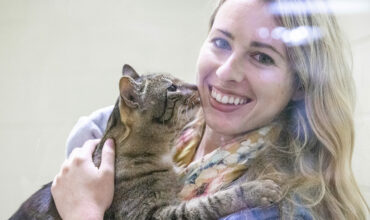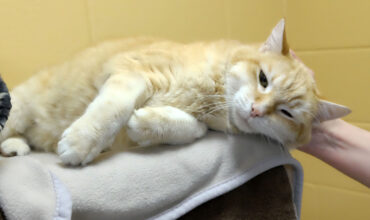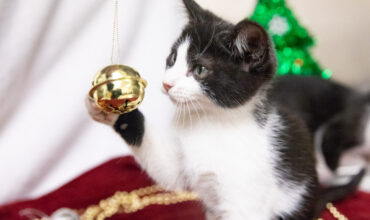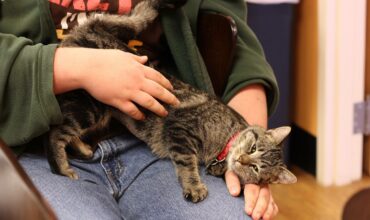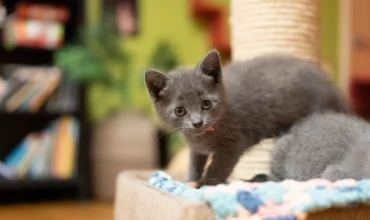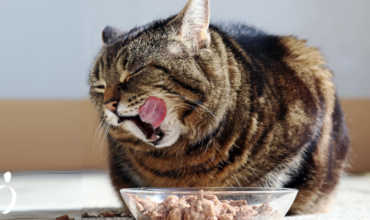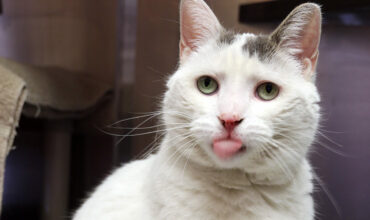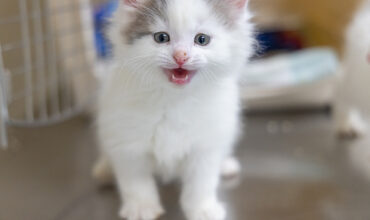When we’re speaking to adopters or planning for bringing a new cat home, what are some of the most important things that we need to keep in mind? Patience Cats thrive on routine and control. A cat moving from one home, or coming from the streets as a stray, to the shelter, to a new home is a lot for even the most easy going cat to handle. We have to give them time to decompress, discover the routine and understand their new environment and the people in it. Patience is key during this time, each cat has to do
Read More
Posts by Jess Vankoningsveld, Behavior Specialist
5 Steps to a Happy Cat
Whether you’re new to living with cats or have had them in your life for twenty years, there are some things that we should all keep in mind when providing the best care for our cats. Making sure that our cat’s most basic needs are met can make a huge difference in how they interact with us. A cat who’s comfortable in their environment, with all of their needs being met, is a happy cat!! Remember the litterbox rule! One litterbox per cat, plus one. If you have two cats, three litterboxes is the best way to go. It can
Read More
Scruffing Cats: The Surprising Truth About This Common Handling Myth
As with anything in our ever-changing world, we know so much more about training and working with cats now, and it’s up to us to advocate for best practices when we’re thinking about how we live with our cats. Let’s talk about “scruffing” or grabbing a cat by the nape of the neck, to move, hold, punish or control a cat. Here’s what we know: The “flexor reflex,” causing cats and kittens to go limp when picked up by their scruff, stops within the first few weeks of life. A mother cat may bite down on a kitten’s scruff and
Read More
Deck the Halls, Not the Vet Bills: How to Keep Your Cat Safe for the Holidays
With the holidays coming up, there are some special considerations for the beloved felines in our families! From being away from home to having a house full of people, here are some ways we can help the cats in our lives to feel more comfortable and to be safe. Some of our favorite holiday plants are toxic for our pets or can be dangerous if ingested. Plants like poinsettias, Christmas Lilly, maryllis, mistletoe, and holly are all listed as plants that we’ll want our cats to steer clear of. If you’re planning on traveling, find someone to check in on
Read More
Can I make my cat a lap cat?
One of the first things people ask when they’re adopting a new cat is whether or not the cat is a lap cat. The truth is that many adult cats are uncomfortable seeking out laps for a variety of reasons, but it’s important to know that we can help our feline friends feel safe enough to seek out and enjoy being close to us, even if they’ve had unpleasant experiences that have taught them otherwise. Find out what motivates your cat. Do they love Churu-style treats? Save those for when you’d like to work on some training with your cat.
Read More
The care and handling of a new kitten
With kitten season in full swing, here are some tips to help you and your newly adopted kitten be as successful as possible! If possible, adopt two kittens! The best way to burn kitten energy is to let them play with another kitten. And trust us, burning kitten energy is possibly the most important thing you’ll need to do with your new friend! Give your kitten a safe, kitten proof space at first. A bathroom or bedroom will be perfect. Make sure they have food, water, litterbox and lots of toys in their room and let them explore the home
Read More
How to pick the right cat for you
You’ve decided you’re ready to adopt a cat! How do you pick the right one? Here are some tips to keep in mind when looking for the best fit possible for your lifestyle. If you have an active home with lots of people or kids, look for a cat who is actively seeking attention. These kitties may be cats who adjust easily or are less concerned with lots of noise and commotion and who would likely do well in a busier home. If you have a very quiet home, or are away from home much of the day, keep in
Read More
Cat-astrophic eating
Do you have a cat who gulps their food, sometimes so quickly that they almost immediately vomit it back up? (Also known as “scarf and barf”ing?) Or maybe you have a cat who gobbles their food and then moves on to steal more food from their feline siblings? Here are a few tips to help with a cat who eats too quickly. Invest in a variety of feeding tools. Feeding puzzles and slow feeders can help slow your cat’s eating down so that they can both digest their food, and potentially prevent them from moving on to the food resources
Read More
Can you change your cat?
We unlock the mystery of how to get your cat to do what you want.
Read More
How to help your one and only kitten
While it may be hard to find peer-reviewed data on what we in the animal welfare industry call “single kitten syndrome,” anecdotally, we’ve all seen it time and time again. When a kitten is raised without littermates or a mom to teach how to interact with other cats and people appropriately, we have a lot more work to do as their human. Here are some important things to make sure you’re adding to your single kitten’s environment to help them thrive and interact with their world, and their people, appropriately. Enrichment Make sure that your little one has plenty of
Read More





